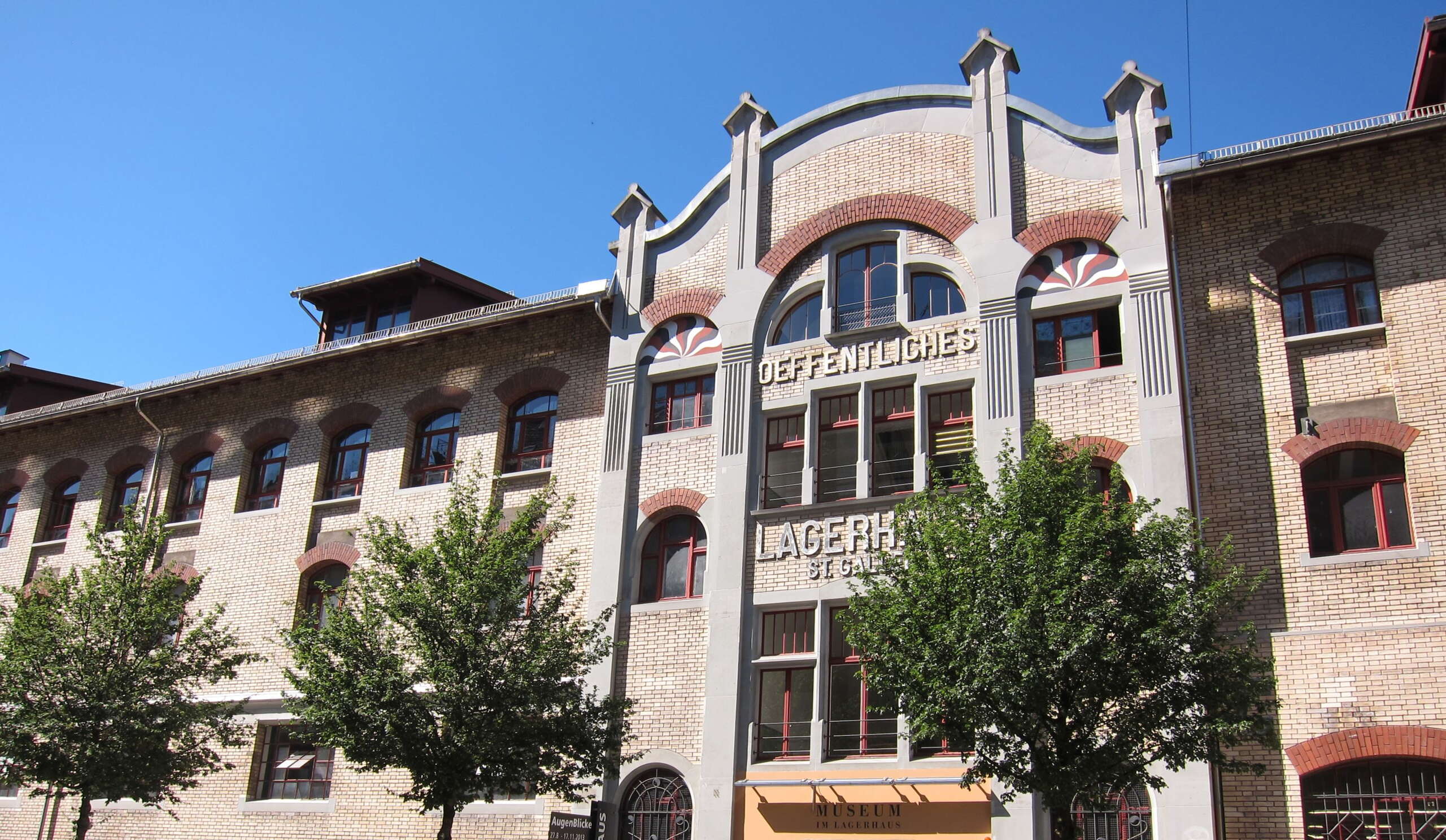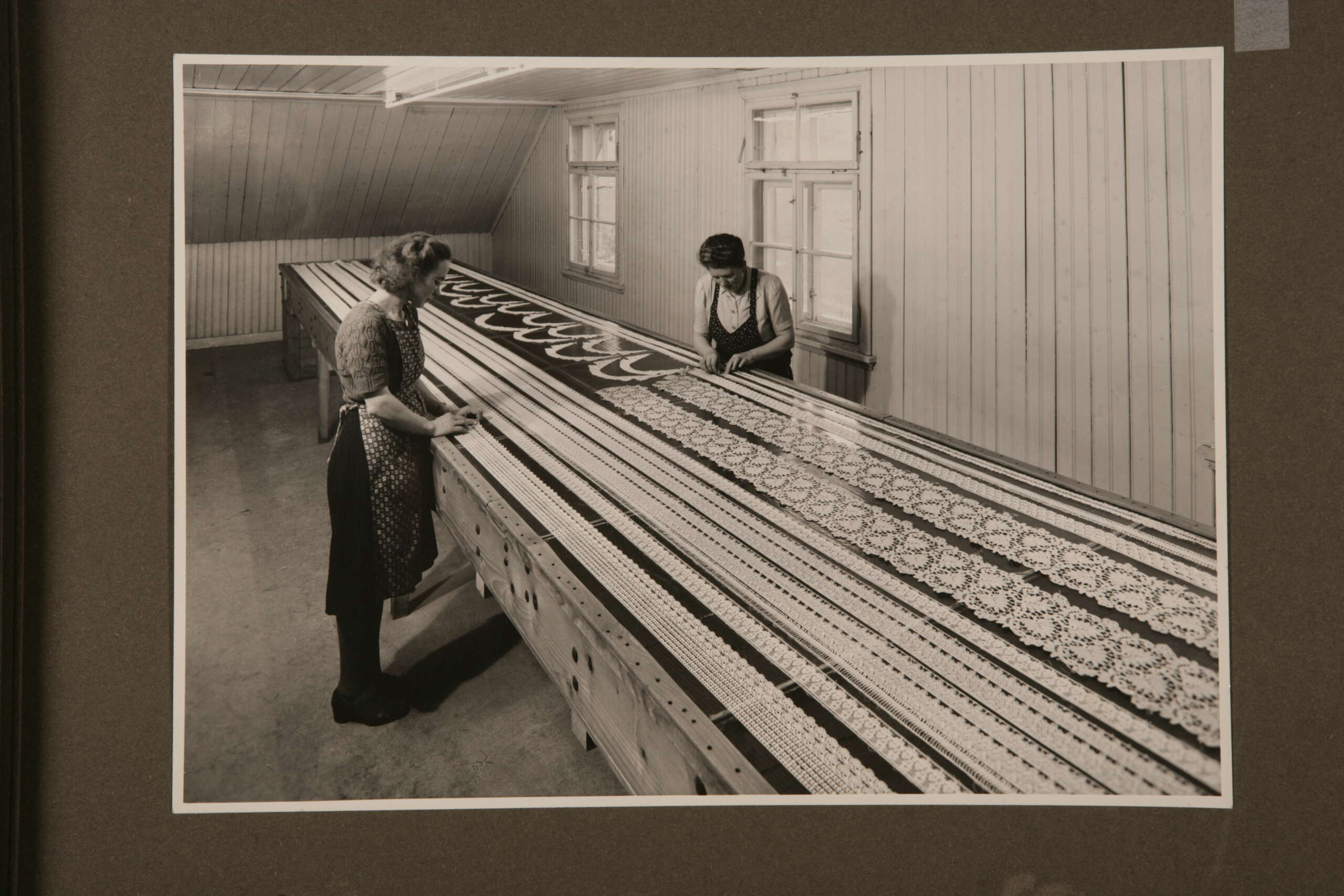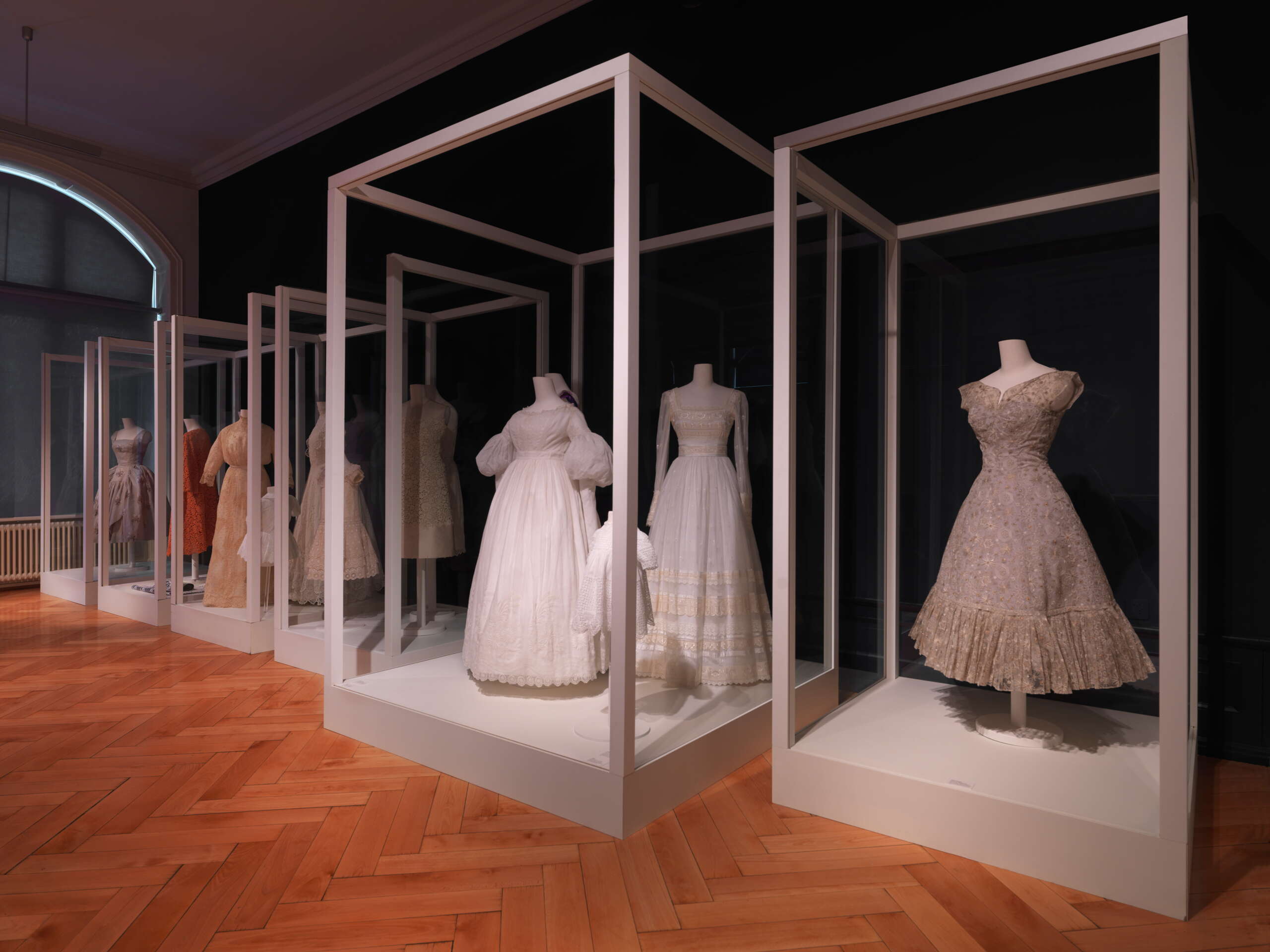History of the textile industry
Eastern Switzerland is a veritable «textile country». For a long time it was one of the world's most important and largest export regions for embroidery products. Around 1910, more than half of the world's production came from Eastern Switzerland, and embroidery was the largest export sector of the Swiss economy, accounting for around one fifth of the total. The First World War brought an end to the heyday of embroidery in eastern Switzerland, and the industry lost quantitative importance. However, trade and the manufacture of textiles had a decisive influence on Eastern Switzerland - and vice versa. To this day, numerous companies in Eastern Switzerland are among the world's leading and most innovative suppliers of textiles and related industries - from haute couture to medical technology and architecture. Thanks to inventiveness and innovation, precision and reliability.
Long before the city became famous for its exquisite embroidery in the 19th century, St. Gallen merchants had successfully traded in linen from eastern Switzerland throughout Europe. In the Middle Ages and in early modern times, the textile industry was the key economic driver in eastern Switzerland. For centuries, thousands of families and worker lived by manufacturing and trading in textiles. The linen industry flourished until the early 18th century, when it was replaced by the production of cotton fabrics. With the invention of the hand embroidery machine, embroidery replaced the cotton industry around 1850.
Today, textile know-how influences development in other areas as well, e.g. in plastics, filter or conductor technology, and St. Gallen embroidery in particular is still regarded as a world leader.
Timeline
| Year | |
|---|---|
| 825 | The St.Gallen Monastery Map provides a record of the first clothing production on site |
| 1438 | First weavers’ guild founded in the city of St.Gallen, international trade begins |
| 1721 | Cotton is processed in Switzerland for the first time |
| 1750 | Cotton becomes increasingly important |
| around 1800 | The first spinning machines come to Switzerland and the country becomes the most industrialised in Europe |
| 1828 | Josua Heilmann invents the hand embroidery machine |
| around 1850 | St.Gallen’s rise as a hub of embroidery begins |
| 1883 | Isaac Groebli invents the Schiffli embroidery machine |
| 1886 | The Industry and Trade Museum opens in St.Gallen (now the Textile Museum) |
| 1890 | 19,389 embroidery machines are in operation in Eastern Switzerland (compared to 6,384 in 1872) |
| 1912 | St.Gallen embroidery ranks first in Swiss export statistics, accounting for 18 % of total exports and also accounts for 50 % of world embroidery production |
| 1920 | The Great Depression hits St.Gallen and the number of inhabitants drops from 75,482 to 64,079 due to unemployment |
| 1935 | Embroidery exports fall to 12 million CHF (compared to 410 million CHF in 1919) |
| 1989–91 | The “boom years”, with over 200 million CHF in sales |
| from 1995 | Large orders begin to be outsourced to Asia. Swiss production becomes specialised in high-value embroideries for lingerie, haute couture / prêt-à-porter fashion and smart textiles |
The eras of the textile industry
| Year | |
|---|---|
| 1200 to 1700 | The Linen Era – “the white gold” |
| 1750 to 1850 | Cotton – start of industrialisation |
| 1850 to1914 | The Embroidery Era – “the golden age” |
| 1914 to1950 | The embroidery crisis |
| 1945 to present | The Eastern Switzerland textile industry today |





